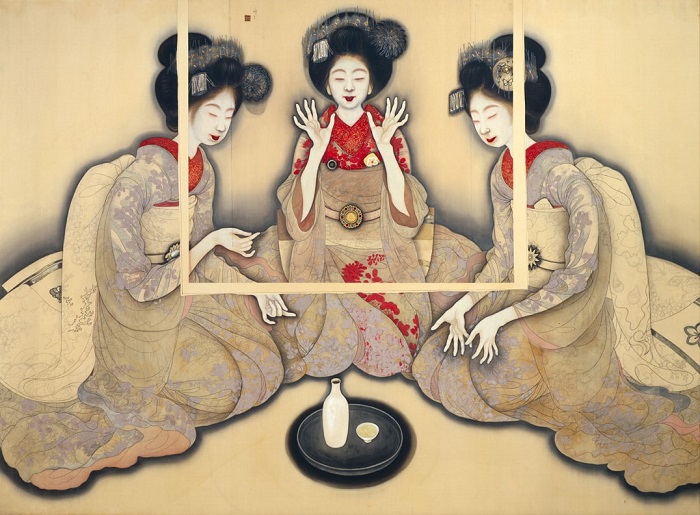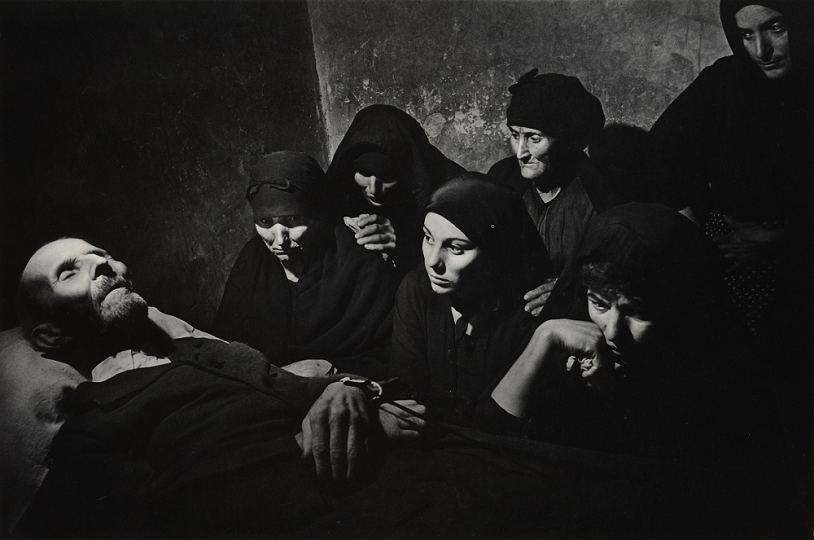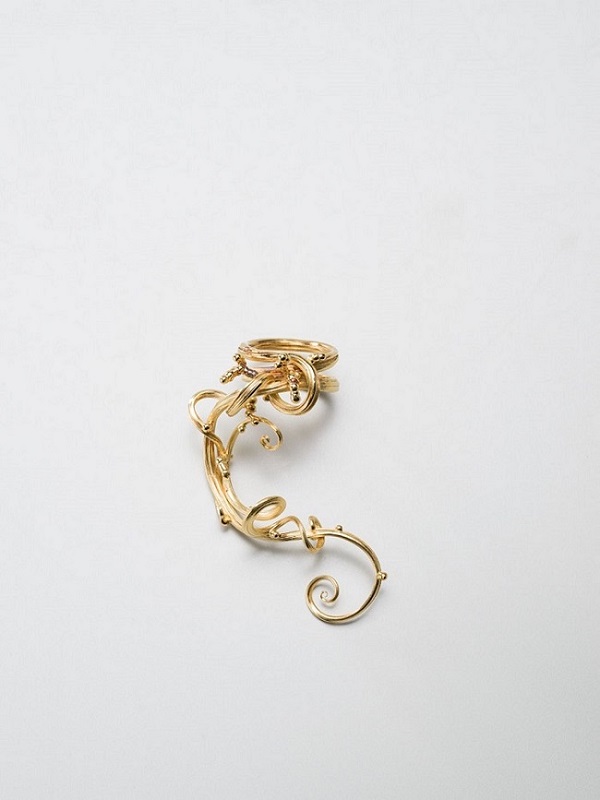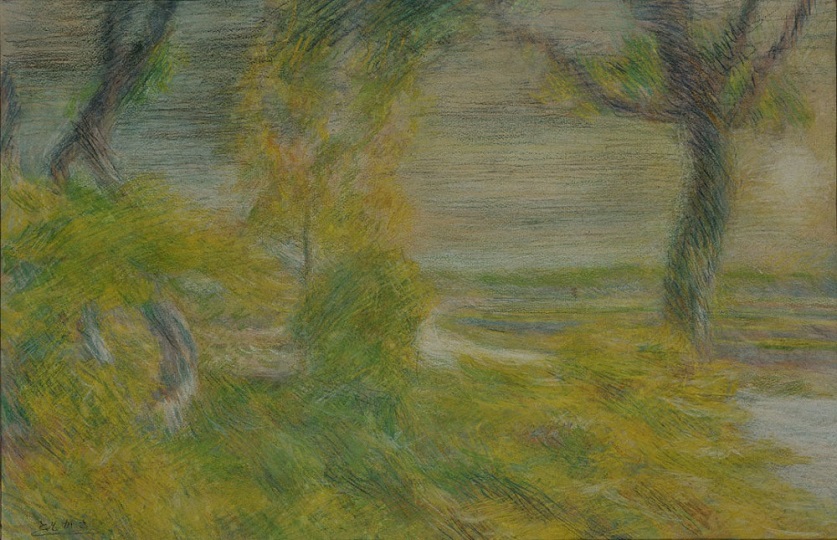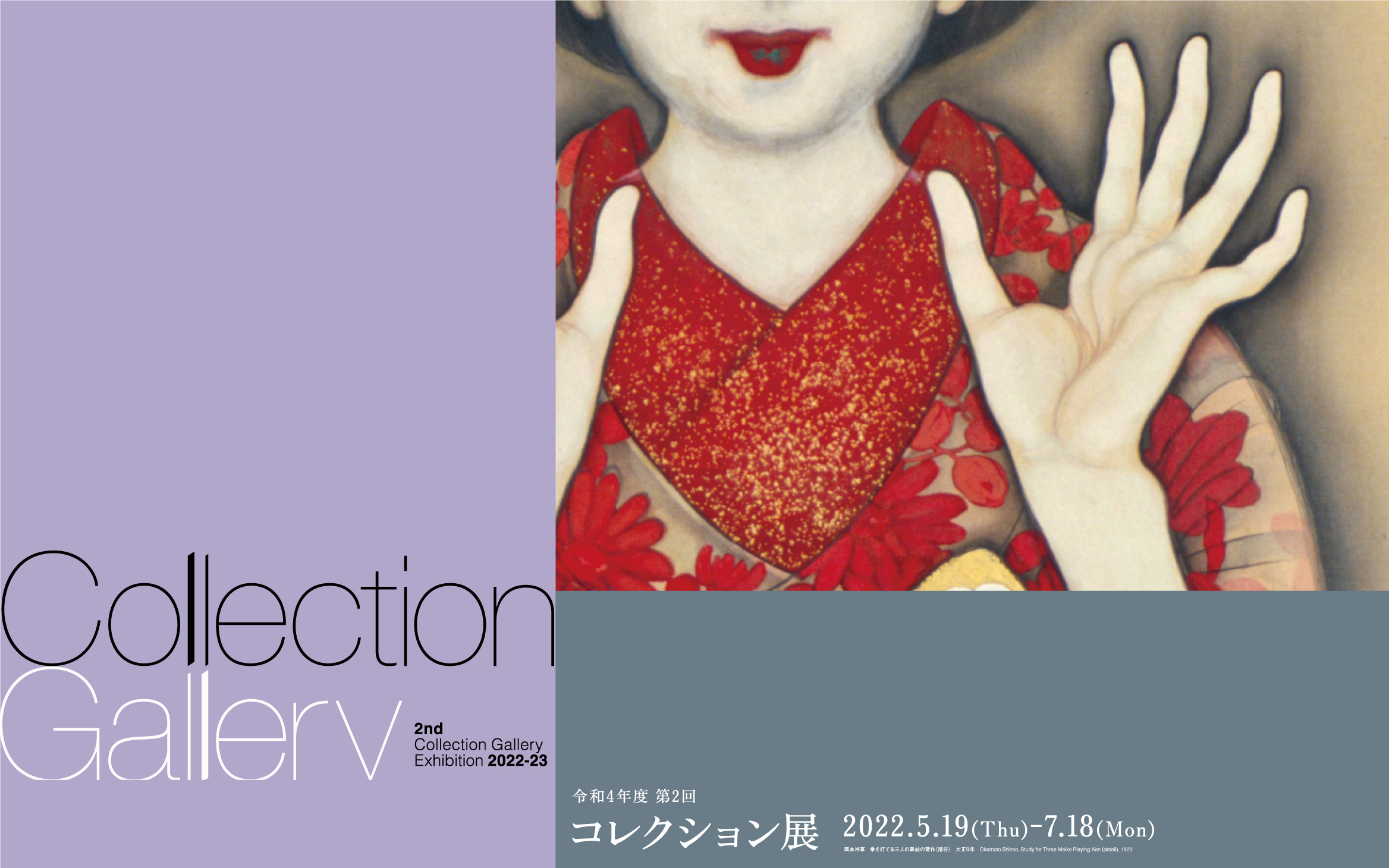
Collection Gallery
2nd Collection Gallery Exhibition 2022–2023
2022.05.19 thu. - 07.18 mon.
Selected Works of Western Modern Art
The ravages of war have cast a dark shadow over the lives and psyches of many artists. In 1933, Hannah Höch, a leading figure in Berlin Dada known for developing the photomontage technique, was plunged into deep loneliness after the Nazi Party assumed control of the government and cracked down on avant-garde art activities, and many of her fellow artists defected from Germany. In her 1936 self-portrait Anxiety, Höch depicted herself in front of a dark cluster of dead trees – a naked expression of her state of mind at the time. As it turned out, in 1937, the Nazi’s branded Höch a “degenerate artist” and prohibited her from engaging in art publicly.
Exactly 85 years ago in April 1937, the Nazi German military abruptly launched an indiscriminate air raid on the small village of Guernica in the Basque region of northwestern Spain, which was in the midst of a civil war. Hearing the news, Pablo Picasso choose the attack as the subject of a mural he had been commissioned to make by the Spanish Republican government for the Spanish Pavilion at the 1937 Paris World’s Fair. The resulting work, Guernica, is now on display at the Museo Reina Sofia in Madrid. In November 1938, Picasso made four still-life paintings based on three elements that were important motifs in Guernica: a burning candle, a palette and brush on top of an open book, and the heads of the Minotaur and a bull. Still Life – Palette, Candlestick, and Head of Minotaur, dated November 4, was the first and most dramatic work in the series. Compared to the candlestick and the palette, painted in brilliant reds and yellows, the shading of the Minotaur’s head is deep and dark. Picasso never made explicit reference to the link between the subject matter of Guernica and the still lifes. However, when seen side by side, the candlestick, book, and palette in the works seem to symbolize enlightenment while the Minotaur suggests barbarism, making it clear that Picasso was attempting to express art’s powerful ability to withstand destruction and oppression – an idea that was of great personal importance to him.
In the late 1940s, George Braque, who along with Picasso had spearheaded the Cubist movement, began making numerous works using a bird, or to be more precise, a flying bird motif. Braque said that his use of this motif was based on his interest in the “constitution of a pictorial fact,” and that he wanted to free the birds he depicted from “contaminants” such as symbols and allegories. Despite this, the slightly humorous yellow bird with its wings spread wide in Braque’s The Bird and Its Shadow, No. 2 seems to reflect the artist’s desire for a free spirit, creativity, and vitality.
On “Kaburaki Kiyokata: A Retrospective” OKAMOTO Shinso, Study for Three Maiko Playing Ken, 1920
In conjunction with the exhibition Kaburaki Kiyokata: A Retrospective on the third floor, we present a selection of Nihonga (modern Japanese-style painting) works, drawn from the collection or deposited with the museum by owners.
Kaburaki Kiyokata, a Tokyo-based painter active in the official state-sponsored exhibitions, is known for bijin-ga (lit. “pictures of beautiful women.”) His position in the art world was somewhat unique, as he believed that because the official exhibitions represented a jumble of different factions, they paradoxically offered considerable freedom, and while he took part in forming other artists’ groups such as Kinrei-sha, he remained within the official exhibition system and strove to keep it unbiased. He also had ties with painters outside the academic art world, and among those based in Kyoto, he was especially close to Tsuchida Bakusen, Nishimura Goun, Nishiyama Suisho, and Kikuchi Keigetsu, all of whom were close in age and way of thinking. Kiyokata, who disliked trains, ventured far from Tokyo only once in his life, and when he was visiting the Kyoto-Osaka-Kobe area in 1930, these members gathered at a traditional restaurant. When they parted ways, Goun repeatedly urged him to stay in Kyoto permanently rather than returning to Tokyo, an episode remembered afterward as a testament to the friendship among the five.
When it comes to Kyoto and bijin-ga, Uemura Shoen is a towering presence. Kiyokata was a lifelong admirer of Shoen and wrote extensively about her. As the son of the writer and newspaperman Jono Saigiku (founder of the forerunner to the Mainichi Shimbun), Kiyokata is also known for his many writings, including critical pieces on artworks and artists for art magazines and books. This exhibit contains works by such artists, as well as those of fellow Kinrei-sha members Kikkawa Reika, Hirafuku Hyakusui, and Matsuoka Eikyu, plus Kiyokata’s star pupils Ito Shinsui and Yamakawa Shuho, and also Ikeda Shoen, who like Kaburaki studied under Mizuno Toshikata. Please enjoy this veritable feast of Nihonga, in addition to the exhibition on the third floor.
War and Photography: W. Eugene SMITH’s World War II and Spanish Village W. Eugene SMITH, Spanish Village: The Wake, 1950/51
“Photography is a potent medium of expression. Properly used it is a great power for betterment and understanding; misused, it can kindle many troublesome fires… The photographer must bear the responsibility for his work and its effect.”
These words were written in 1948 by W. Eugene Smith, an American photographer who left a significant mark on the history of photojournalism. They still ring true today, in 2022, when the peaceful world order is still vulnerable to severe disruption by a single nation’s use of force.
When World War II broke out, Smith was a war correspondent for Life magazine, the general-interest weekly known for its high-quality photography. He photographed battles on the front lines of the land war between Japan and the US, including in Saipan, Iwo Jima, and Okinawa, and published his work in the magazine. While covering the war, Smith turned his camera on fallen soldiers and on Japanese civilians, especially children, who were caught up in the fighting. Smith’s photographs powerfully convey the reality of how civilians are sacrificed to the cause of maintaining “the state.”
Spanish Village is a classic photo essay by Smith that first appeared in Life in 1951. Spain had been under fascist rule since 1939, and the US was not only appeasing but also financially supporting the dictatorial regime of Francisco Franco. The first time Smith visited Spain, he was determined to show the world the true faces of its poverty-stricken people. Despite this initial political agenda, his photographs taken in the rural village of Deleitosa reveal his admiration for the villagers’ lifestyles and customs that he witnessed. We hope this exhibition will provide opportunities to reflect on the power of the photographic medium as embodied by Smith’s work, which focuses on human dignity and endeavors to draw closer to fundamental truths of our world.
Kimono as a Modern Craft MUNEHIRO Rikizo, Tsumugi Silk Kimono with Vermilion Circles and Lattice Pattern, 1976
The kimono is an elegant visual representation of the spirit of Japan. Originally an everyday garment worn by the Japanese, the kimono has reflected the aesthetic sensibilities of successive eras through variations colors and patterns, without significant changes to its shape. Its original form was the kosode (“short-sleeved”) kimono, and starting in the late Muromachi Period (c.1336-1573), various dyeing and weaving techniques were used to produce diverse colors and patterns, while the kimono’s role in aristocratic dress evolved from undergarment to outerwear. In the Edo Period (1603-1868), as the economic power of townspeople increased, many dressed in vivid, stylish kimono, regardless of their social status.
The modern kimono was at first a continuation of the mid-19th century kosode form. Until the post-World War II period, when Western-style clothing became the norm, the kimono played the role of reflecting fashion trends and embodying highly codified aesthetic sensibilities for various occasions ranging from auspicious to mundane. Today, however, kimono are rarely worn in everyday life, and are produced mainly as aesthetic articles for self-presentation on special occasions or as works of art to be admired. Kimono materials, techniques, and patterns are freely selected according to the creator’s artistic sensibilities. Modern kimono are diverse and highly imaginative works of craft, which also have the practical capacity to be worn. This section presents only a small portion of the museum’s kimono collection, but we hope you will savor the unending variety of artists’ aesthetic sensibilities pursued within the single format of the kimono.
Also, we mark the passing of Kitamura Takeshi, whose retrospective exhibition was held at the museum in 2011-12 and who died on March 31 of this year. Mr. Kitamura was a textile artist recognized as a Living National Treasure for his mastery of tate-nishiki (a warp-faced, compound weave brocade) and ra (complex gauze) type weaving, techniques designated as Important Intangible Cultural Properties. His highly refined weaving, carried out through meticulous calculation, has entranced numerous viewers and exerted an enormous influence on younger artists. In memory of his achievements during his lifetime, we are pleased to present a special exhibit of his works.
The Crafts of Ornament and Apparel MIYATA, Rando III (Kohei), Ring: Mizuhanome 3, 1980
In our daily lives, at times we put on our favorite clothes and jewelry because of the sense of satisfaction it gives us, while at times others’ attire affects our impressions of them. Meanwhile, things a person has worn can take on a certain physicality of their own, and seem to symbolize that individual. Marilyn Levine produces trompe-l’œil ceramics with the motif of leather jackets, in which she turns the texture of worn leather into a metaphor for the time lived by the garments’ owners and the emotional scars endured during this time.
Tiny, delightful pieces of jewelry are works of craft, produced with traditional artisanal techniques such as ceramics and metal casting, but are also items that offer a sense of private pleasure. At the same time, jewelry worn on the body is visible to the public, and the use of precious metals and gems can display the wearer’s wealth and social status. Some works of contemporary jewelry utilize new forms and materials to render visible the intersecting gazes of seer and seen. It has been noted that a piece of jewelry is only completed with the presence of a wearer, and by being worn, it becomes a communication tool through which new meaning is created. Otto Künzli says, “As a culturally aware person, if you purchase jewelry, you want it to be real gold of the finest quality and shape, which becomes a small personal treasure.” He continues, “It’s like wearing a morsel of the finest authentic Swiss chocolate.”
SAKAMOTO Hanjiro and AOKI Shigeru SAKAMOTO Hanjiro, Fresh Young Leaves Sprouting (the Embankment of the Arakawa River), 1919
This year marks the 140th anniversary of the birth of Sakamoto Hanjiro (1882-1969) and Aoki Shigeru (1882-1911).
The two were born the same year, both in Kurume, Fukuoka, and were childhood friends and classmates at the same higher primary school (equivalent to the first and second grades of junior high school today). For a time they also both attended a local art class run by Mori Miyoshi (1872-1913), and after moving to Tokyo, they studied at Fudosha Painting School under Koyama Shotaro (1857-1916). Truly, they had numerous things in common.
However, while in their hometown Sakamoto’s artistic talent appeared to blossom more quickly, Aoki moved to Tokyo first, going on to Tokyo School of Fine Arts after Fudosha Painting School, and ambitiously absorbing Western art while voraciously studying mythology and antiquities at the Imperial Library and the Imperial Household Museum. He honed his painting skills to such an extent that when he returned to Kurume in the summer of his 19th year, Sakamoto was astounded at how rapidly he had advanced.
With Aoki’s encouragement, Sakamoto accompanied him to Tokyo and enrolled at Fudosha Painting School, where Sakamoto continued to cherish his friendship with Aoki and other artists such as Fukuda Tane (1885-1968). However, Sakamoto did not go on to Tokyo School of Fine Arts, and took a very different career path from Aoki. A precocious and prodigious talent, Aoki was so far ahead of his time that a certain point he abruptly fell out of step with the world around him, then fell on hard times, became ill, and died young. In stark contrast, Sakamoto worked steadily and gained attention gradually, spent time studying in France, lived a long life, and eventually grew to be acclaimed as one of the leading modern masters of Japanese Western-style painting. However, no one was more dedicated than Sakamoto to honoring the memory of Aoki.
Here we present works by Sakamoto and Aoki, all drawn from the collection or deposited with the museum by their owners, arranged in nearly chronological order. While there are only a small number of works in this exhibit, it is sufficient to enable viewers to compare the works of Aoki, which developed in various directions in a short period of time, with those of Sakamoto, which slowly deepened over the course of many years.
Exhibition Period
2022.05.19 thu. - 07.18 mon.
Themes of Exhibition
Selected Works of Western Modern Art
On “Kaburaki Kiyokata: A Retrospective”
War and Photography: W. Eugene SMITH’s World War II and Spanish Village
Kimono as a Modern Craft
The Crafts of Ornament and Apparel
SAKAMOTO Hanjiro and AOKI Shigeru
[Outside] Outdoor Sculptures
List of Works
2nd Collection Gallery Exhibition 2022–2023 (148 works in all) (PDF)
Free Audio Guide App
How to use Free Audio Guide (PDF)
Hours
9:30 AM – 6:00 PM
May 19 -26 and July 12 -18: 10:00 AM – 6:00 PM
*Fridays: 9:30 AM (10:00 AM) – 8:00 PM(except May 20 and July 15)
*Admission until 30 min. before closing
*Opening hours is subject to change, due to the prevention against COVID-19 pandemic.
Please check the updated information, before your visit.
Admission
Adult: 430 yen (220 yen)
University students: 130 yen (70 yen)
High school students or younger,seniors (65 and over): Free
*Figures in parentheses are for groups of 20 or more.
Collection Gallery Free Admission Days
May 21, July 16, 2022
In conjunction with...
May 19 - July 18, 2022
MONDO: The Front Runner of Film Poster Art
Free Audio Guide App How to use Free Audio Guide (PDF)



